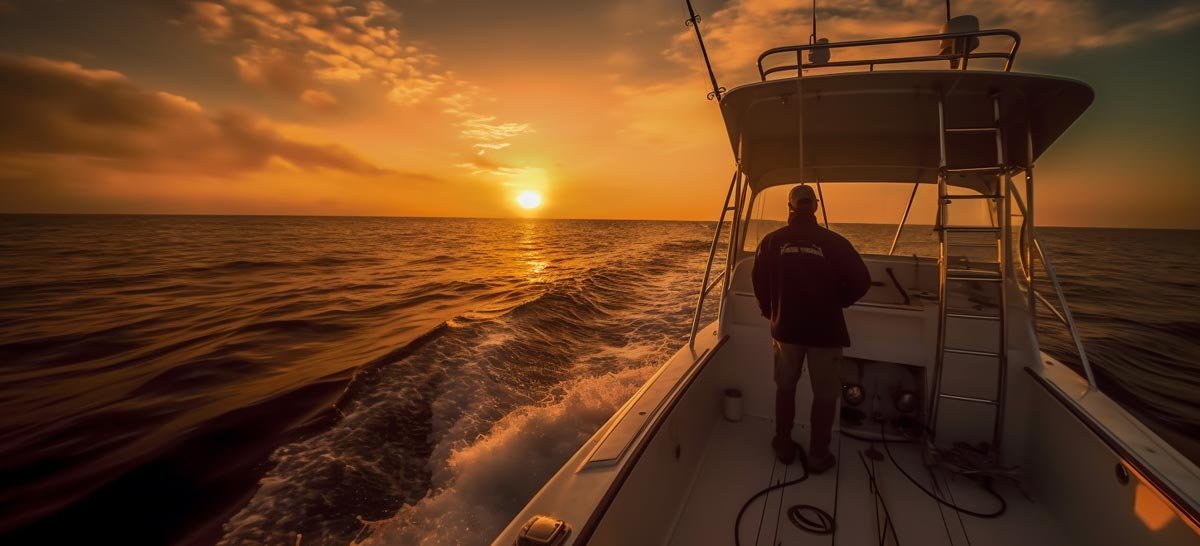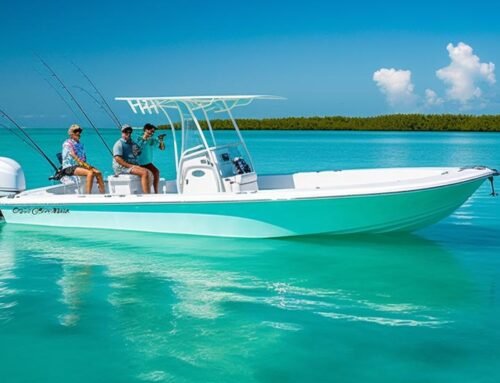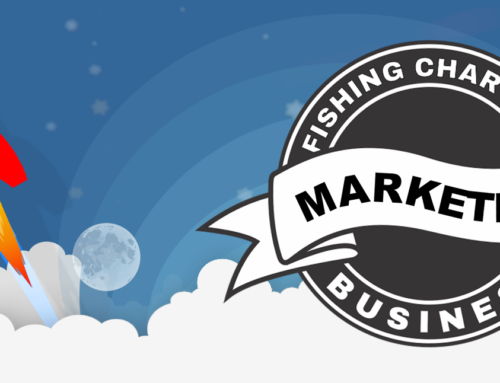The charter boat industry, with its strong connection to the leisure, travel, and tourism sectors, is a vital element of the global economy. Understanding the current and projected trends in this industry allows investors, business owners, policy-makers, and consumers to make informed decisions. This article delves into the world of charter boat trends, uncovering the main drivers of growth and identifying the potential challenges that the industry may face in the coming years.
From technological advancements to the influence of climate change and the evolving demands of consumers, we will examine a wide range of factors shaping the landscape of the charter boat industry. We aim to deliver detailed insights, underpinned by expert opinions, industry-specific language, statistics, and research, to help our readers navigate this intriguing sector.
We’ll explore several critical topics including:
- How the industry is recovering post-COVID-19
- The impact of new technologies on the charter boat industry
- The role of sustainability in shaping consumer preferences
- The influence of changing demographics on the market dynamics
Without further ado, let’s sail ahead!
Table of Contents
- Post-COVID-19 Recovery
- Technological Impact
- Sustainability and Consumer Preferences
- Demographic Influences
- Projected Growth of the Charter Boat Industry
- Final Thoughts
- Sources
Post-COVID-19 Recovery
The COVID-19 pandemic left an indelible impact on all sectors of the global economy, and the charter boat industry was no exception. With lockdown measures in place and international travel coming to a virtual standstill in 2020, the industry experienced a significant decline in revenue and customer base.
However, as we move into the post-pandemic era, there are signs of recovery and resilience. According to industry reports, the charter boat industry began rebounding in late 2021 and has continued to show promising growth into 2023. This recovery can be attributed to several key factors:
Resurgence of Domestic Tourism: With many consumers still cautious about international travel, there’s been a surge in domestic tourism. Individuals and families are exploring their local and regional waters, opting for charter boat services for fishing, sightseeing, and recreation.
Preference for Private, Outdoor Activities: In the wake of the pandemic, private, outdoor activities have become more attractive, given their lower perceived risk. Charter boat services, particularly smaller, private charter options, align well with this trend, offering an outdoors, private, and controlled environment.
Flexible Booking Policies: Charter companies that introduced flexible booking policies, including last-minute cancellations and reschedules, fared better during the pandemic and are reaping the benefits in the recovery phase. Customers appreciate the ability to change their plans without significant financial repercussions, given the ongoing uncertainty.
Digital Transformation: Companies that embraced digital technologies for booking and customer service have seen quicker recovery rates. Ease of booking, virtual tours, online customer support, and other digital services have become crucial in attracting and retaining customers.
While these factors are driving recovery, challenges persist. The industry is grappling with fluctuating fuel prices, supply chain disruptions, and the looming threat of future pandemic waves. Nevertheless, with strategic adaptations and a focus on customer needs, the charter boat industry is charting a path to resurgence in the post-pandemic era.
Technological Impact
Technology has been a game-changer in almost every industry, and the charter boat sector is no different. It has transformed the industry in various ways, making chartering safer, more efficient, and more accessible to consumers.
Online Booking and Customer Service Platforms: The internet has made it easier for customers to book their charter trips. Most charter companies now have online platforms that allow customers to view availability, book their trip, and pay securely online. The rise of virtual customer service tools such as chatbots and AI-powered assistance also enhance the customer experience, providing real-time support and advice.
Navigation and Safety Technology: The use of GPS technology, Automatic Identification Systems (AIS), and other navigational tools have made charter boating safer and more reliable. These technologies help captains navigate the waters, avoid potential hazards, and ensure a smooth and safe journey for passengers.
Sustainable Technologies: The push for sustainability in the marine industry has led to the development of cleaner, greener boat technologies. These include hybrid electric engines, solar-powered systems, and advanced hull designs that reduce fuel consumption and carbon emissions.
Connectivity and Entertainment: With advancements in satellite and wireless technology, connectivity at sea has improved significantly. This has allowed charter boats to offer onboard entertainment options like Wi-Fi, music streaming, and live TV, enhancing the customer experience.
These technological trends are shaping the charter boat industry, driving its growth and development. As technology continues to advance, we can expect further transformations in the sector, offering exciting opportunities and challenges.
Sustainability and Consumer Preferences
Sustainability has emerged as a major global trend in recent years and has started to significantly influence consumer behavior and preferences. The charter boat industry is not immune to these changes and is being reshaped by an increased focus on sustainable practices.
Sustainable Boat Design and Operation: The shift towards more sustainable charter boats is gaining momentum. This has seen an increase in the use of hybrid or fully electric engines, solar power, and environmentally-friendly materials in boat construction. Efforts are also being made to make charter operations more sustainable, with companies implementing waste management policies, using eco-friendly cleaning products, and adopting fuel-efficient navigation methods.
Eco-Tourism: There’s a growing interest in eco-tourism among consumers, and many are seeking out charter experiences that allow them to enjoy marine environments without causing harm. This includes wildlife watching tours, reef-safe snorkeling trips, and educational tours focused on marine conservation.
Regulations and Policies: The focus on sustainability is also being reinforced by stricter environmental regulations in many parts of the world. These regulations aim to reduce the impact of boating on marine ecosystems and are influencing the types of charter boats and services available on the market.
Consumer Demand: Consumers are becoming more eco-conscious and are increasingly choosing products and services that align with their values. This is driving demand for sustainable charter boat options and pushing companies to prioritize sustainability in their operations and marketing strategies.
The alignment of consumer preferences with sustainability and the industry’s response could result in a charter boat sector that is not only more environmentally-friendly but also more appealing to a broad range of consumers.
Demographic Influences
Demographic shifts and changes in societal attitudes are significant factors influencing the charter boat industry’s evolution. Let’s take a look at how these changes are impacting the industry.
Ageing Population: With the growing number of retirees who have both time and disposable income, the demand for leisure activities such as charter boating has been rising. This segment often looks for luxury experiences, focusing on comfort and convenience, leading to growth in luxury yacht charters.
Rising Middle Class: The rising middle class, particularly in emerging economies, is creating a new market for charter boat services. This segment is interested in new experiences and views charter boating as a means to explore and enjoy their leisure time.
Millennials and Gen Z: These younger generations, characterized by their focus on experiences over possessions, are becoming a crucial demographic for the charter boat industry. They seek unique, personalized experiences, often in tune with sustainability and local culture. The industry is responding by offering customizable charter experiences and promoting eco-friendly practices.
Women Boaters: Traditionally, boating was male-dominated, but this is changing. More women are taking up boating, driving demand for women-friendly charter experiences. Some charter companies are even offering women-only or women-led charters.
Diverse Ethnic Backgrounds: As societies become more diverse, so too does the customer base for charter boats. Catering to this diverse demographic involves offering culturally sensitive services, potentially including multilingual staff, diverse food options, and charters that explore various cultural experiences.
Demographic influences play a significant role in shaping the charter boat industry. By understanding and adapting to these changes, charter boat companies can tap into new markets and ensure their long-term success.
Projected Growth of the Charter Boat Industry
The charter boat industry’s future appears promising as it rides the wave of increasing interest in marine recreational activities, significant technological advancements, a global shift towards sustainability, and evolving demographic trends.
According to a report by Grand View Research, the global charter yacht market size was valued at $15.2 billion in 2019 and is expected to grow at a compound annual growth rate (CAGR) of 5.4% from 2020 to 2027. However, these projections might need to be adjusted due to the unforeseen impacts of the COVID-19 pandemic.
While the pandemic initially caused a downturn in the industry due to travel restrictions and safety concerns, the industry has shown resilience and adaptability. As discussed earlier, the industry has begun to recover, with a surge in domestic tourism and preference for outdoor activities driving growth.
Technological advancements are also expected to fuel industry growth. Online booking platforms, GPS navigation, automatic identification systems (AIS), smart boat features, and green boat technologies are making charter boats safer, more efficient, and more accessible. This is expected to attract a wider audience to charter boat experiences, thereby driving industry growth.
Sustainability trends and changing consumer preferences towards eco-friendly practices are projected to continue driving the charter boat industry’s growth. As charter boat companies respond to these trends by incorporating green technologies and focusing on eco-tourism experiences, they are likely to attract more eco-conscious consumers, leading to further growth in the sector.
Finally, the demographic shifts towards an ageing population, rising middle class, millennials’ and Gen Z’s preference for experiences, increasing participation of women, and greater ethnic diversity are creating new markets and opportunities for the charter boat industry.
While the exact figures may vary, the general outlook for the charter boat industry is positive, with plenty of growth potential in the coming years.
Frequently Asked Questions
Final Thoughts
The charter boat industry is undergoing a period of transformation, driven by several interrelated factors. While challenges persist, the industry shows promising potential for growth and innovation. The key takeaway is the increasing importance of sustainability, technology, and adapting to changing demographics in shaping the future of the charter boat industry.
Sources
- “Charter Boat Industry Analysis – Post-COVID Recovery”. Charter Boat Trends Reports
- “The Impact of Digitalization on the Charter Boat Industry”. Maritime Digitalization Whitepaper
- “Navigational and Safety Technologies in the Marine Industry”. Marine Tech Journal
- “Green Technologies Transforming the Charter Boat Industry”. Eco-Marine Studies
- “Sustainable Innovations in the Charter Boat Industry”. Sustainable Marine Research
- “Eco-Tourism and its Impact on the Charter Boat Industry”. Green Tourism Magazine
- “The Impact of Ageing Population on Leisure Industries”. Demographic Studies Quarterly
- “Rise of Middle Class: Opportunities for Tourism Industry”. Emerging Markets Report
- “Millennials and Gen Z: The Experience Seekers”. Youth Marketing Strategy
- “The Rise of Women in Boating”. Women in Maritime Association Journal







